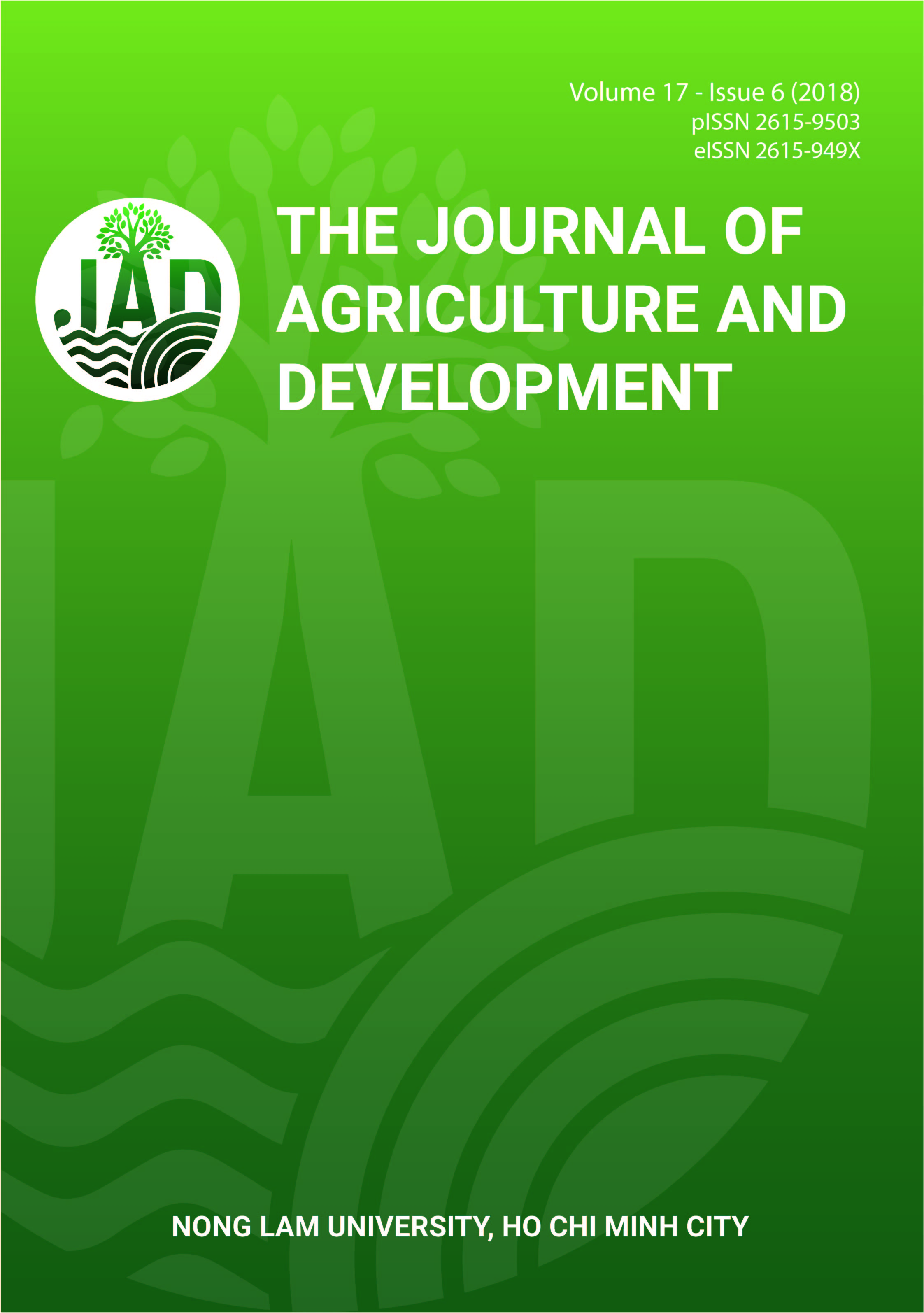Detecting toxin genes of Clostridium perfringens isolated from diarrhea piglets using multiplex PCR
Main Article Content
Abstract
Clostridium perfringens is currently classified into five types (A, B, C, D, E) based on the different toxins produced. Type
A and C are known as the causative agent of enteritis and enterotoxemia in newborn and young piglets with severe intestinal lesions including edema, hemorrhage and necrosis. A multiplex PCR (mPCR) was developed in order to quickly and early determine the presence of genotypes of C. perfringens based on their genes of cpa, cpb, cpb2 and cpe encoding alpha toxin, beta toxin, beta2 toxin and enterotoxin with predicted products of 324 bp, 196 bp, 107 bp and 257 bp respectively.
The detection limit of the mPCR assay was 1 × 103 copies/reaction for each gene. Sequencing of mPCR products performed with clinical samples collected from C. perfringens suspected pigs showed that the mPCR test functioned specifically. In conclusion, the developed mPCR test successfully detected the presence of genes cpa, cpb, cpb2 and cpe in the examined samples. Analysis of the bacteria isolated from field samples of diarrheal piglets collected in this study indicated that C. perfringens carrying gene cpa counted for 96.66% and 3.33% was identified as C. perfringens carrying genes cpa and cpb concurrently. Gene cpe was not found in this study, while gene cpb2 was detected coincidently in 73.33% of the samples with cpa gene. The results indicate that the prevalence of these four toxin genes is cpa, cpb2, cpb and cpe in decending order.
Article Details
References
Chan, G., Farzan A., Soltes, G., Nicholson, V. M., Pei Y., Friendship, R., & Prescott, J. F. (2012). The epidemiology of Clostridium perfringens type A on Ontario swine farms, with special reference to cpb2-positive isolates. BMC Veterinary Research, 8(1), 156. https://doi.org/10.1186/1746-6148-8-156
Kanakaraj, R., Harris, D. L., Songer, J. G.,& Bosworth, B. (1998). Multiplex PCR assay for detection of Clostridium perfringens in feces and intestinal contents of pigs and in swine feed. Veterinary microbiology 63(1), 29-38. https://doi.org/10.1016/S0378-1135(98)00229-6
Lebrun, M., Mainil, J. G., & Linden, A. (2010). Cattle enterotoxaemia and Clostridium perfringens: description, diagnosis and prophylaxis. Veterinary Record 167(1), 13-22. https://doi.org/10.1136/vr.167.1.12
Markey, B., Leonard, F., Archambault, M., Cullinane, A., & Maguire, D. (2013). Clinical veterinary microbiology (2nd ed.). Edinburgh, UK: Mosby Elsevier.
Mcclane, B. A., Uzal, F. A., Miyakawa, M. E. F., Lyerly, D., & Wilkins, T. (2006). The prokaryotes (3rd ed.). New York, USA: Springer.
Meer, R. R., & Songer, J. G. (1997). Multiplex polymerase chain reaction assay for genotyping Clostridium perfringens. American Journal of Veterinary Research 58(7), 702-705.
Van Asten, A. J., Nikolaou, G. N., & Grone, A. (2010). The occurrence of cpb2-toxigenic Clostridium perfringens and the possible role of the β2 toxin in enteric disease of domestic animals, wild animals and humans. The veterinary journal 183(2), 135-140. https://doi.org/10.1016/j.tvjl.2008.11.005
Yadav, J. P., Das, S. C., Dhaka, P., Vijay, D., Kumar, M., Mukhopadhyay, A. K., Chowdhury G., Chauhan P., Singh R., Dhama K., Malik S., & Kumar A. (2017). Molecular characterization and antimicrobial resistance profile of Clostridium perfringens type A isolates from humans, animals, fish and their environment. Anaerobe 47, 120-124. https://doi.org/10.1016/j.anaerobe.2017.05.009








